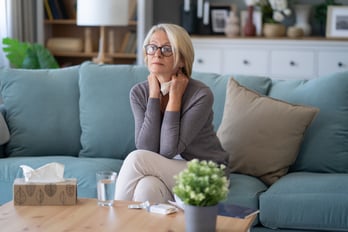 Imagine a full exercise class, residents upbeat and ready to start, a packed schedule of personal training clients, or hallway conversations about how good the residents feel after exercising. I say imagine because during the cold months, these things aren’t always a reality.
Imagine a full exercise class, residents upbeat and ready to start, a packed schedule of personal training clients, or hallway conversations about how good the residents feel after exercising. I say imagine because during the cold months, these things aren’t always a reality.
There are many reasons why our group fitness classes have lower participation, why our personal training clients keep pushing off their session until next week, and why we don’t have as many conversations with seniors about feeling well and full of energy. As staff, we need to be prepared for these seasonal shifts and adjust as needed. Seasonal Affective Disorder can play a huge role in the lack of resident participation and engagement in the fitness center. Here are some tips that staff can implement to keep senior residents active.
Tip #1: Change the group fitness schedule.
NIFS staff collect data on class participation, and we use this data to enhance our group fitness calendar seasonally. If you know it’s too cold outside to continue your outdoor walking class, change it to a gym circuit class. You can entice those residents to take the new circuit class by incorporating use of the treadmill or other cardio equipment, along with strength machines and usage of the non-typical group fitness class equipment.
Take note that in the New Year it's great time to trial a new class with the uptick in New Year’s Resolutioners. Use that feedback to adapt and keep the excitement going through the next few months.
Tip #2: Call the residents or send them a personal note.
You know who the regulars are and when they come to the fitness center. Haven’t seen them for a week? Call them or send them a personal note that you miss them and would like to meet for a consultation to see if they need any assistance adjusting their personal fitness routine. This act of kindness goes a long way in keeping seniors engaged and staying active.
Consider creating a few handouts, such as balance and no-equipment total body workout, that can be given to residents who are struggling to come to the fitness center but are open to exercising in the comfort of their own home.
Tip #3: Run a wellness program or presentation and incorporate SAD facts and management techniques.
During the winter months, it can be easy for people to dismiss their feelings. Maybe they think they are tired after being busy decorating and baking and going to all of the social functions. But what about when the holiday rush is over? It is up to community and fitness center to staff to not only engage residents to stay active, but to also consider their overall wellbeing. Following the holiday or winter season may be a great time to focus on wellness and highlight ways to manage Seasonal Affective Disorder or be a helping hand to someone who expresses SAD symptoms.
Consider hosting the presentation or wellness social and offering a giveaway for complementary personal training, to help residents get back into an exercise routine, or a complementary massage, to help residents relax and decompress.
Put these tips into action and see how small changes can make big impacts for the senior residents and fitness center engagement!

